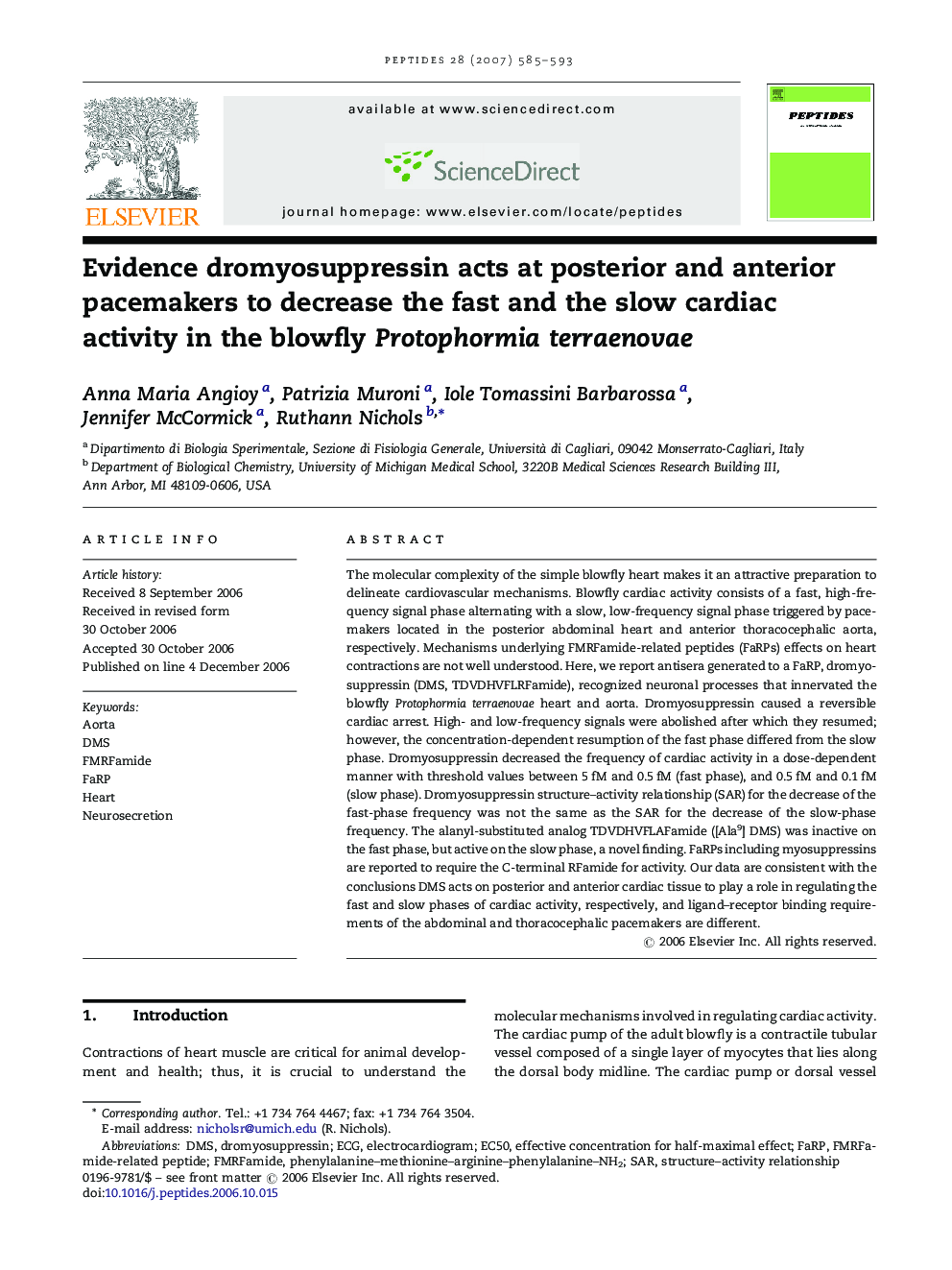| Article ID | Journal | Published Year | Pages | File Type |
|---|---|---|---|---|
| 2008142 | Peptides | 2007 | 9 Pages |
Abstract
The molecular complexity of the simple blowfly heart makes it an attractive preparation to delineate cardiovascular mechanisms. Blowfly cardiac activity consists of a fast, high-frequency signal phase alternating with a slow, low-frequency signal phase triggered by pacemakers located in the posterior abdominal heart and anterior thoracocephalic aorta, respectively. Mechanisms underlying FMRFamide-related peptides (FaRPs) effects on heart contractions are not well understood. Here, we report antisera generated to a FaRP, dromyosuppressin (DMS, TDVDHVFLRFamide), recognized neuronal processes that innervated the blowfly Protophormia terraenovae heart and aorta. Dromyosuppressin caused a reversible cardiac arrest. High- and low-frequency signals were abolished after which they resumed; however, the concentration-dependent resumption of the fast phase differed from the slow phase. Dromyosuppressin decreased the frequency of cardiac activity in a dose-dependent manner with threshold values between 5Â fM and 0.5Â fM (fast phase), and 0.5Â fM and 0.1Â fM (slow phase). Dromyosuppressin structure-activity relationship (SAR) for the decrease of the fast-phase frequency was not the same as the SAR for the decrease of the slow-phase frequency. The alanyl-substituted analog TDVDHVFLAFamide ([Ala9] DMS) was inactive on the fast phase, but active on the slow phase, a novel finding. FaRPs including myosuppressins are reported to require the C-terminal RFamide for activity. Our data are consistent with the conclusions DMS acts on posterior and anterior cardiac tissue to play a role in regulating the fast and slow phases of cardiac activity, respectively, and ligand-receptor binding requirements of the abdominal and thoracocephalic pacemakers are different.
Keywords
Related Topics
Life Sciences
Biochemistry, Genetics and Molecular Biology
Biochemistry
Authors
Anna Maria Angioy, Patrizia Muroni, Iole Tomassini Barbarossa, Jennifer McCormick, Ruthann Nichols,
